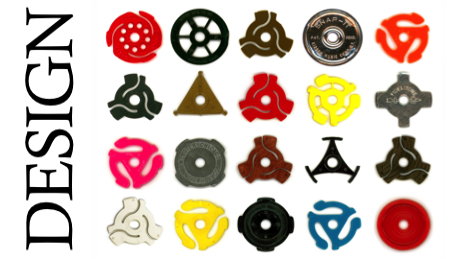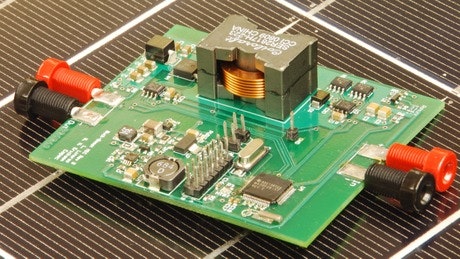Back to Courses









Mechanical Engineering Courses
Showing results 1-10 of 148
Design: Creation of Artifacts in Society
This is a course aimed at making you a better designer. The course marries theory and practice, as both are valuable in improving design performance. Lectures and readings will lay out the fundamental concepts that underpin design as a human activity. Weekly design challenges test your ability to apply those ideas to solve real problems. The course is deliberately broad - spanning all domains of design, including architecture, graphics, services, apparel, engineered goods, and products. The emphasis of the course is the basic design process: define, explore, select, and refine. You, the student, bring to the course your particular interests and expertise related to, for instance, engineering, furniture, fashion, architecture, or products. In prior sessions of the course about half of the participants were novices and about half had prior professional design expertise. Both groups seem to benefit substantially from the course. All project work is evaluated by your peers -- and indeed, you will also be a peer reviewer. This format allows you to see an interesting collection of projects while getting useful feedback on your own project.

Modern Robotics, Course 1: Foundations of Robot Motion
Do you want to know how robots work? Are you interested in robotics as a career? Are you willing to invest the effort to learn fundamental mathematical modeling techniques that are used in all subfields of robotics?
If so, then the "Modern Robotics: Mechanics, Planning, and Control" specialization may be for you. This specialization, consisting of six short courses, is serious preparation for serious students who hope to work in the field of robotics or to undertake advanced study. It is not a sampler.
In Course 1 of the specialization, Foundations of Robot Motion, you will learn fundamental material regarding robot configurations, for both serial robot mechanisms and robots with closed chains. You will learn about configuration space (C-space), degrees of freedom, C-space topology, implicit and explicit representations of configurations, and holonomic and nonholonomic constraints. You will also learn how to represent spatial velocities and forces as twists and wrenches. This material is at the core of the study of anything that moves (e.g., robots).
This course follows the textbook "Modern Robotics: Mechanics, Planning, and Control" (Lynch and Park, Cambridge University Press 2017). You can purchase the book or use the free preprint pdf. You will build on a library of robotics software in the language of your choice (among Python, Mathematica, and MATLAB) and use the free cross-platform robot simulator V-REP, which allows you to work with state-of-the-art robots in the comfort of your own home and with zero financial investment.

Introduction to Power Electronics
This course can also be taken for academic credit as ECEA 5700, part of CU Boulder’s Master of Science in Electrical Engineering degree.
This course introduces the basic concepts of switched-mode converter circuits for controlling and converting electrical power with high efficiency. Principles of converter circuit analysis are introduced, and are developed for finding the steady state voltages, current, and efficiency of power converters. Assignments include simulation of a dc-dc converter, analysis of an inverting dc-dc converter, and modeling and efficiency analysis of an electric vehicle system and of a USB power regulator.
After completing this course, you will:
● Understand what a switched-mode converter is and its basic operating principles
● Be able to solve for the steady-state voltages and currents of step-down, step-up, inverting, and other power converters
● Know how to derive an averaged equivalent circuit model and solve for the converter efficiency
A basic understanding of electrical circuit analysis is an assumed prerequisite for this course.

Additive Manufacturing
This course, Additive Manufacturing, is the third course in the Coursera Specialization, Digital Technologies and the Future of Manufacturing.
In this course, learners will be introduced to the concept of Additive Manufacturing, learn how it is applied in manufacturing, and what businesses should consider as they decide to implement this technology. Considerations include the economics of the technology, information technology infrastructure, manufacturing ecosystem partners, the business value of implementing Additive Manufacturing, and what needs to happen across the organization to ensure successful implementation.
Learners will hear from industry experts as they share their perspectives on the opportunities and challenges of implementing Additive Manufacturing, how Additive Manufacturing is being implemented in their companies, and insights on the future of this technology within their industry and across manufacturing.
The content presented in this course draws on a number of real-life interviews and case studies, and was created through a partnership with Siemens.

Digitalisation in the Aerospace Industry
The online course Digitalisation in Aerospace aims at making you aware of special production requirements connected with digitalisation. You will learn about the role of robotics and automation in manufacturing and gain a better understanding of differing perspectives on research and manufacturing as well as the points where these intersect.

Fundamentals of Fluid-Solid Interactions
What is fluid-solid interactions ? It is what happens when the motions of a fluid and of a solid are somehow coupled. This happens all the time, around you when leaves flutter in the wind, inside you when your heart beats, above you when wings of a plane vibrate, under the sea... The idea behind this MOOC is to give you the basic tools to be able to predict and eventually mitigate things called flutter, galloping, sloshing, vortex-induced vibrations, added mass, to cite a few.
We are going to consider any possible domains of applications such as civil engineering, aerospace engineering, nuclear engineering , ocean engineering, biomechanics and even food processing !
This is why we called the course “Fundamentals of Fluid Solid Interactions ”. There are so many phenomena and so many models that we need to work together on the basic mechanisms .
If you want to see how fluid-solid interactions work, and be able to use that knowledge, join us !
A first session of the course was run in early 2016, with learners from over 100 countries. It is now available with subtitles, in English and now in Chinese.
See the video at http://goo.gl/YKSMnD

Applications in Engineering Mechanics
This course applies principles learned in my course “Introduction to Engineering Mechanics” to analyze real world engineering structures. You will need to have mastered the engineering fundamentals from that class in order to be successful in this course offering. This course addresses the modeling and analysis of static equilibrium problems with an emphasis on real world engineering systems and problem solving.
---------------------------
Recommended Background:
You will need to have successfully completed my earlier course “Introduction to Engineering Mechanics” in order to be successful in this course.
---------------------------
The copyright of all content and materials in this course are owned by either the Georgia Tech Research Corporation or Dr. Wayne Whiteman. By participating in the course or using the content or materials, whether in whole or in part, you agree that you may download and use any content and/or material in this course for your own personal, non-commercial use only in a manner consistent with a student of any academic course. Any other use of the content and materials, including use by other academic universities or entities, is prohibited without express written permission of the Georgia Tech Research Corporation. Interested parties may contact Dr. Wayne Whiteman directly for information regarding the procedure to obtain a non-exclusive license.

Manufacturing Process with Autodesk Fusion 360
Designing a product is only part of the process. Now, can that product be manufactured? A CNC machinist works with computer numeric controlled (CNC) machines from generating the machine code to machine setup and run. Understanding both CAD and CAM is essential to this portion of a design. Even if you are not the end user who programs a machine, it is invaluable to know how it’s done. This knowledge translates directly to part design by helping make intelligent design decisions with manufacturing in mind. This course introduces you to the integrated CAD/CAM approach behind Fusion 360 CAD/CAM as well as 3D printed design setup and finally assembly and testing. All stages of product design in one place!
After completing this course, you will be able to:
• Explain the Fusion 360 integrated CAD/CAM manufacturing workflow.
• Summarize the trends that are influencing the future of manufacturing.
• Demonstrate knowledge and skills in foundational concepts of Fusion 360 CAD/CAM software.
• Set up a Flight Controller.
• Assemble a quadcopter.
• Fly the final design.
Looking for Autodesk Fusion 360 certification prep courses? Check out additional learning resources to help you uplevel your skills: https://www.autodesk.com/learning

Engineering of Structures: Shear and Bending
This course deals with shear and bending. Shear is a set of parallel, non-collinear forces acting across an element and bending is the curved form taken by a slender element when subjected to loads perpendicular to the element. These forces are easy to understand. You will study how stress and bending force acts for different structures and also, identify what role these forces play in their designs. The first module introduces you to the concept of shear and bending while building structures. The second module explores different understanding of stress and bending. It defines important terms used to understand these forces. It also studies the impact of shear and compression on beams of different materials. You will also learn how to calculate shear stresses and bending stresses. The third module explores how to build a cardboard beam or shelf . You'll also study the structure beam and share a report on it.

Autodesk Certified Professional: AutoCAD for Design and Drafting Exam Prep
Prove to potential employers that you’re up to the task by becoming an Autodesk Certified Professional. This online course from Autodesk prepares you by offering an overview of skills that match what is covered in the Autodesk Certified Professional: AutoCAD for Design and Drafting exam. The video lessons are structured to match the exam’s objective domains and follow the typical workflow and features of the AutoCAD software, including sections on drawing and organizing objects, drawing with accuracy, advanced editing functions, layouts, printing, and outputs, annotation techniques, and reusable content and drawing management. In the course, you will create drawing objects, manage layers, apply object snaps, and work with the User Coordinate System. You’ll edit objects and apply rotation and scale, array techniques, grip editing, offsets, fillet and chamfer, and trim and extend. You will also gain an understanding of exam topics such as layouts and viewports, output formats, and drawing management. Brush up on markup tools, hatch and fill, text, tables, multileaders, dimensioning, and much more.
About the Autodesk Certified Professional: AutoCAD for Design and Drafting Exam:
The Autodesk Certified Professional: AutoCAD for Design and Drafting exam is the recognized standard for measuring your skills and knowledge in AutoCAD. Certification at this level demonstrates a comprehensive skill set that provides an opportunity for individuals to stand out in a competitive professional environment. This type of experience typically comes from having worked with the software on a regular basis for at least 2 years, equivalent to approximately 400 hours (minimum) - 1200 hours (recommended), of real-world Autodesk software experience. Ready to take the exam? Schedule to take the exam online or find a testing center near you on pearsonvue.com/autodesk.
Looking for more skill-building courses? Check out Autodesk’s additional learning resources to help with your learning journey: https://www.autodesk.com/learning
Popular Internships and Jobs by Categories
Find Jobs & Internships
Browse
© 2024 BoostGrad | All rights reserved